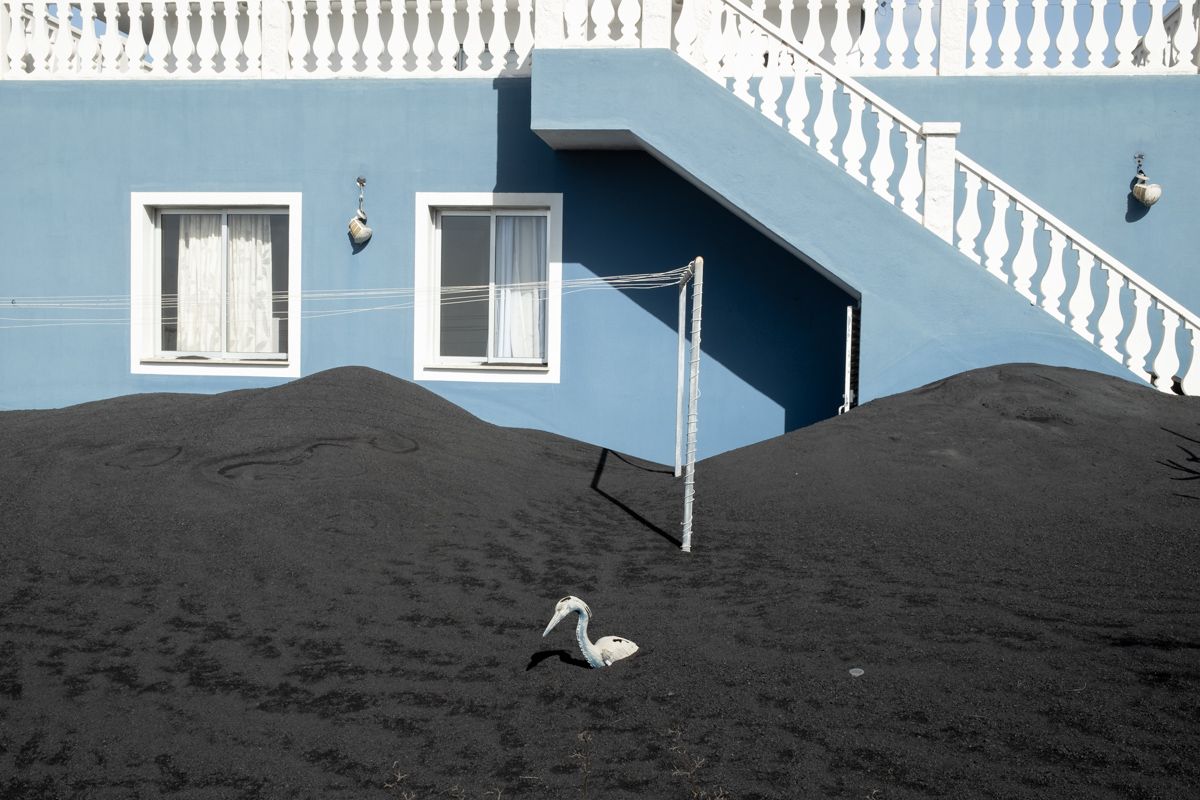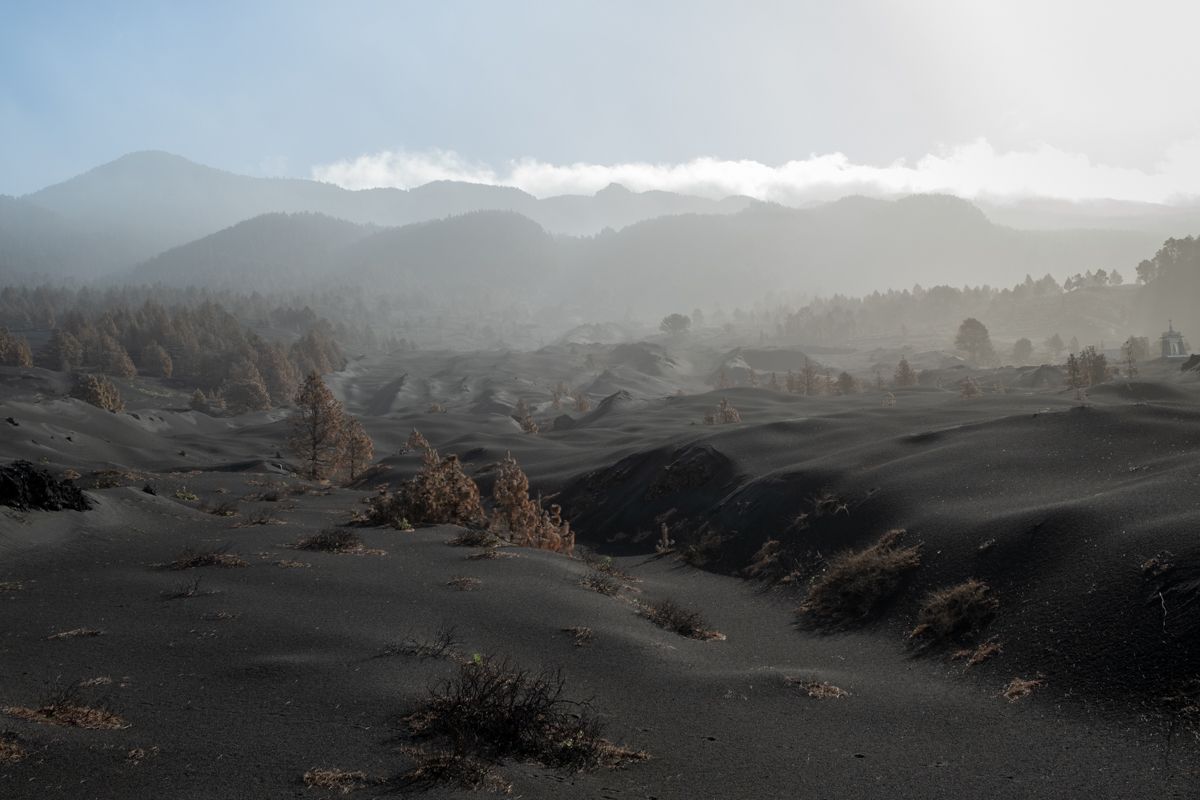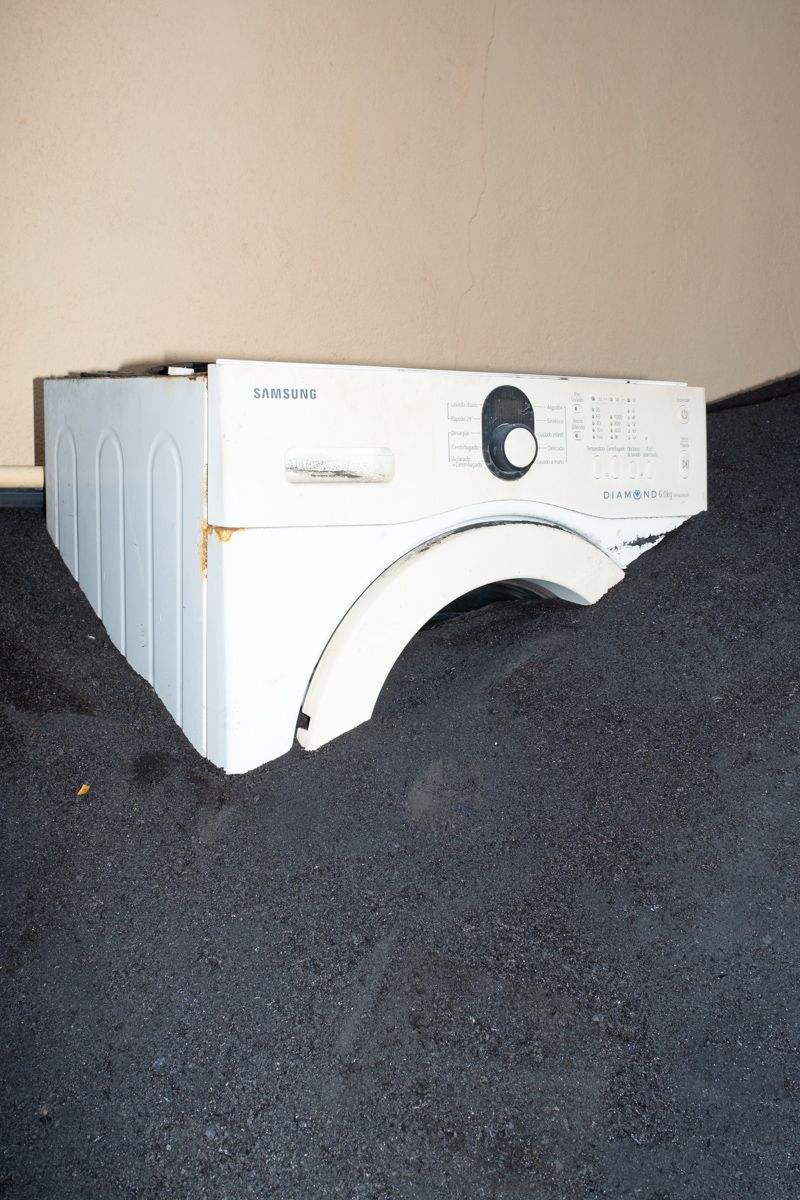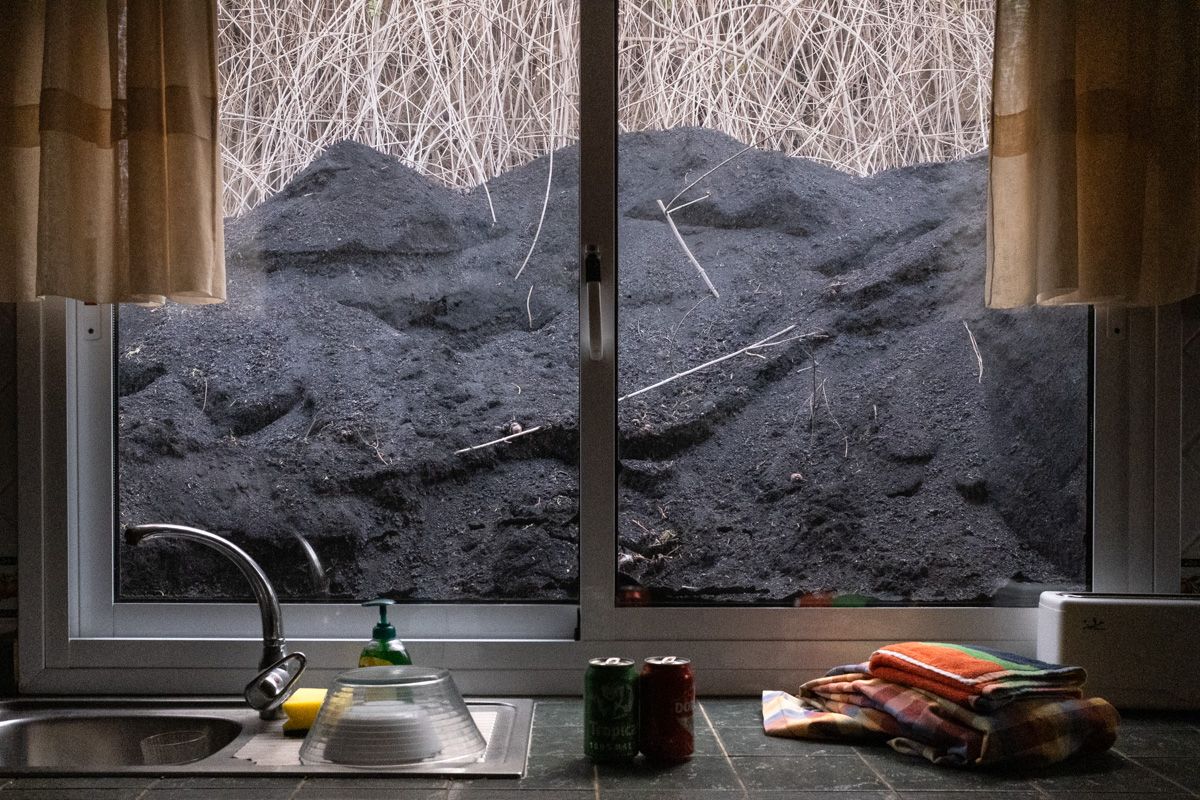blog
Interview with featured photographer Kinga Wrona

The found view of house covered with volcanic ash in Las Manchas. ©Kinga Wrona
Kinga Wrona’s project “85” focuses on the aftermath and impact of the eruption of the Cumbre Vieja volcano using a social documentary approach. She is interested in the relationship between people and nature in the context of natural disasters like this one, climate change and environmental degradation. For this project, she spent time on the island of La Palma talking with residents about their experiences, photographing the place, and making portraits.
::
F-Stop Magazine: Can you tell us a bit about yourself, how did you become involved in photography?
Kinga Wrona (KW): I am a photographer from Poland, currently living in Cracow. In my works I mainly focus on social documentary photography with an emphasis on the environmental aspects/issues. I came to photography in a very typical way. I bought a camera to document the first years of my daughter’s life. I was so interested in it and I enjoyed it so much that I started to read about photography, practiced and finally studied at the Institute of Creative Photography in Czech Republic which I am finishing now.
F-Stop: The current issue of F-Stop Magazine includes images from your work “85,” can you tell us about this project?
KW: I was following news on the internet regarding la Palma since the first day of the eruption of the volcano Cumbre Vieja. It seemed so unreal to me like it was happening on another planet. I was intrigued how it is possible that nowadays nobody can predict when and where volcano eruptions will happen. Some signs may appear but it is never certain it will occur. Almost everything that is connected with the eruption of a volcano is always and still a mystery.
It was so hard for me to imagine living in a place with so much risk and so much uncertainty. I was also very interested in the social aspects of living on a volcanic island. I traveled to la Palma twice in 2022, not having been there before. I was photographing by intuition and based on the stories I heard from the people I met there. It was my personal interaction with the nature and environment I found being there. Editing the project I was looking for photographs that describe this inseparable relationship between humans and nature and show how fragile the environment is, shaped and managed by man.

The football court in Las Manchas few weeks after the eruption of the Cumbre Vieja volcano was declared over. KingaWrona9:The found view of the car in Las Manchas few weeks after the eruption of the volcano Cumbre Vieja was declared over. ©Kinga Wrona

The landscape of Las Manchas few weeks after the eruption of the volcano Cumbre Vieja was declared over. ©Kinga Wrona
F-Stop: You have also made portraits of residents of La Palma as part of this project, tell us a bit about how you approached your subjects and the town and how you see these two parts of the project working together.
KW: I came to la Palma with no plans and started talking to people on the street from the first day. After a few days, I met a lot of people whose lives had changed dramatically due to the volcano eruption. I spent hours talking with them, having dinners, taking a walk, and listening to their stories which were still very vivid for them as I came to la Palma right after the eruption ended. At that time many islanders were still living in a caravan or were placed in hotels or just returned to their homes after being evacuated for months. I photographed them in their homes or current place of living or simply a place important to them.
The rest of my time I spent on my own journeys around the island to the places people told me about. I was photographing spontaneously driven by intuition, how I like it the most. Those are the moments I forget about everything and I am present in that unique moment. I think all of those meetings and conversations resonating in me helped me to create this project and edit it later on.
F-Stop: Seeing your images with the volcanic ash all around houses and belongings makes me wonder – in your conversations with residents what did you learn about how they live with the aftermath of the eruption? Will they leave the volcanic ash where it is? Does this experience change how they live going forward?
KW: Of course, they were cleaning their houses to be able to come back to normal life but most of the volcanic ash stays there. La Palma only exists because volcanic eruption built this land a long time ago, forming the archipelago known as the Canary Islands. Because of this, it is an inseparable element of the landscape of this place. They live and plan to stay on the island because they feel they belong to this place. Their fathers and grandfathers were born there. They can’t imagine having a different life in a different place. What I found unique in talking with islanders was their great humility in this situation. I heard, “You know it is a great tragedy, but the volcano was first here, gave us a land for a living, later we came, we have to remember it and respect it” (…) “Living here on a volcanic island is always a love-hate relationship”
F-Stop: Do you have a favorite image or story from this series?
KW: I do not have a particular favorite image from the story, but possibly the photograph of the washing machine and the kitchen window is the one that talks to me the most and shows the message I would like to give to the people through that project. There are many stories that happened to me while I was on the island and I still remember them. For sure, one was the day I tried to get into the restricted/dangerous zone of the island as a “cleaning lady” to take photos. I was escorted by the police, but I spent some time there and took some photos. Another memorable moment was when I walked on the lava in my flip-flops and, after a minute, noticed fire rising from under the lava (quite irresponsible, I have to say!). And the most impactful and memorable moments are all the meetings with the people I met there, with whom I still keep in contact.

The found view of washing machine covered with volcanic ash in Las Manchas. ©Kinga Wrona

The house of Francisco, as found, after the explosion of volcano in La Palma. January 2022, Las Manchas. ©Kinga Wrona
F-Stop: Which artists or photographers most inform your creative practice? And Why?
KW: There are a lot of photographers I follow and it changes a lot from year to year so it is a very difficult question. I like to be inspired by young photographers so I like to see exhibitions at small festivals. I am also inspired by art like painting and sculpture.
F-Stop: Are you working on any other projects currently?
KW: I work with a group of women called Mariscadoras who collect seafood in the rivers of the Atlantic Ocean in northern Spain. Their life and work are highly impacted by the climate crisis. This is a project I have been working on for a while and it is almost finished. I also have a few open topics in different parts of Europe, but they are in very early stages.
::
Kinga Wrona is Polish documentary photographer whose works explores the relationship between human and nature in aspect of climate change, natural disaster or environmental degradation. To see more of Kinga’s work visit www.kingawrona.com
Location: Online Type: Environment, Featured Photographer, Interview
Events by Location
Post Categories
Tags
- Abstract
- Alternative process
- Architecture
- Artist Talk
- artistic residency
- Biennial
- Black and White
- Book Fair
- Car culture
- Charity
- Childhood
- Children
- Cities
- Collaboration
- Community
- Cyanotype
- Documentary
- Environment
- Event
- Exhibition
- Faith
- Family
- Fashion
- Festival
- Film Review
- Food
- Friendship
- FStop20th
- Gender
- Gun Culture
- Habitat
- Hom
- home
- journal
- Landscapes
- Lecture
- Love
- Masculinity
- Mental Health
- Migration
- Museums
- Music
- Nature
- Night
- nuclear
- p
- photographic residency
- Photomontage
- Plants
- Podcast
- Portraits
- Prairies
- Religion
- River
- Still Life
- Street Photography
- Tourism
- UFO
- Water
- Zine

Leave a Reply